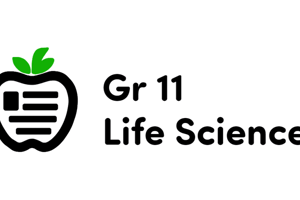Podcast
Questions and Answers
What are some ways to reduce industrial pollution?
What are some ways to reduce industrial pollution?
Laws should be implemented for the conservation of forests and reducing carbon dioxide emission; the increase of CFCs should also be minimized.
Why is it important to minimize the use of fossil fuels?
Why is it important to minimize the use of fossil fuels?
To reduce the emission of greenhouse gases that contribute to global warming.
Which types of energy sources should be promoted over fossil fuels?
Which types of energy sources should be promoted over fossil fuels?
Hydroelectricity, solar power, wind power, wave energy.
What should be used for short visits instead of motor cars to reduce carbon monoxide levels?
What should be used for short visits instead of motor cars to reduce carbon monoxide levels?
What was the primary aim of the UNFCCC?
What was the primary aim of the UNFCCC?
When and where was the Earth Summit held?
When and where was the Earth Summit held?
What was a significant agreement made in the Kyoto Protocol?
What was a significant agreement made in the Kyoto Protocol?
What is the role of the Global Environmental Facility (GEF)?
What is the role of the Global Environmental Facility (GEF)?
What are the three main objectives of the GEF?
What are the three main objectives of the GEF?
Which process is believed to have originated the atmosphere?
Which process is believed to have originated the atmosphere?
Flashcards are hidden until you start studying
Study Notes
Atmosphere Introduction
- The atmosphere is the blanket of air surrounding the Earth, densest at sea level and thinning rapidly upwards.
- The atmosphere is composed of 78.03% Nitrogen, 20.95% Oxygen, 0.93% Argon, 0.03% Carbon dioxide, and 0.01% Hydrogen, with traces of other gases.
Composition of Atmosphere
- The atmosphere is a uniform mixture of permanent gases, water vapour, dust particles, smoke, and pollens.
- Water vapour is always present in the lower part of the atmosphere, with dust, pollen, bacteria, smoke particles, seeds, and spores also present.
Structure of Atmosphere
- The atmosphere is divided into five layers: Troposphere, Stratosphere, Mesosphere, Thermosphere, and Exosphere.
- Troposphere: The lowest layer, extending up to 14 km above sea level, with decreasing temperature and humidity.
- Stratosphere: The second layer, extending up to 50 km above sea level, with a constant temperature and low humidity.
- Mesosphere: The third layer, extending up to 85 km above sea level, with the lowest temperature and ice clouds.
- Thermosphere: The fourth layer, extending up to 690 km above sea level, with increasing temperature and helium and hydrogen gases.
- Exosphere: The outermost layer, with no definite boundary, and the atmosphere escaping into space.
Greenhouse Effect
- The greenhouse effect is a phenomenon where gases like carbon dioxide, methane, and chlorofluorocarbons absorb infrared radiation, warming the Earth's surface and lower atmosphere.
- Sources of greenhouse effect include:
- Burning of fossil fuels and coal
- Deforestation and industrialization
- Automobiles and railways
- Burning of firewood and forest fires
- Industrial activities and appliances
- Consequences of greenhouse effect include:
- Rise in global temperature and sea level
- Changes in rainfall patterns and extreme weather conditions
- Disruption of ecosystems and food chains
Global Warming
- Global warming refers to the rise in mean global temperature, affecting the Earth's surface and ecosystems.
- Causes of global warming include:
- Increase in greenhouse gases
- Deforestation and industrialization
- Burning of fossil fuels and coal
- Climate change and ozone depletion
- Effects of global warming include:
- Rise in sea level and ocean acidification
- Changes in rainfall patterns and extreme weather conditions
- Disruption of ecosystems and food chains
- Extinction of flora and fauna
Ozone Depletion
- Ozone depletion refers to the thinning of the ozone layer in the stratosphere, allowing harmful ultraviolet radiation to reach the Earth's surface.
- Causes of ozone depletion include:
- Release of chlorofluorocarbons (CFCs) and other ozone-depleting substances
- Burning of fossil fuels and coal
- Deforestation and industrialization
- Effects of ozone depletion include:
- Increased risk of skin cancer and cataracts
- Disruption of ecosystems and food chains
- Destruction of marine life
Ways to Minimize Global Warming
- Reduce industrial pollution and greenhouse gas emissions
- Implement laws for conservation of forests
- Promote the use of hydroelectricity, solar power, wind power, and wave energy
- Reduce the use of fossil fuels and CFCs
- Increase the use of eco-friendly products and practices
International Efforts to Control Greenhouse Effect
- The United Nations Framework Convention on Climate Change (UNFCCC) sets an overall framework for countries to address global warming.
- The Kyoto Protocol aims to reduce greenhouse gas emissions by 5.4% by 2012.
- The Global Environmental Facility (GEF) facilitates global environmental cooperation between developed and developing countries.
Studying That Suits You
Use AI to generate personalized quizzes and flashcards to suit your learning preferences.




